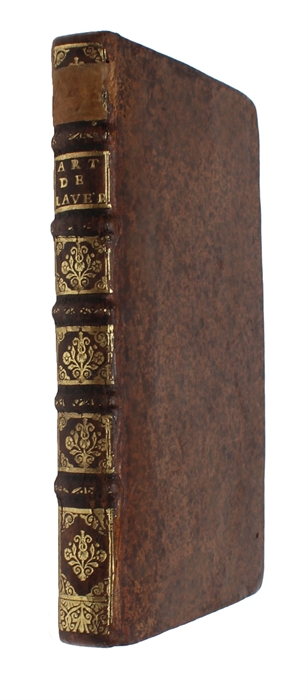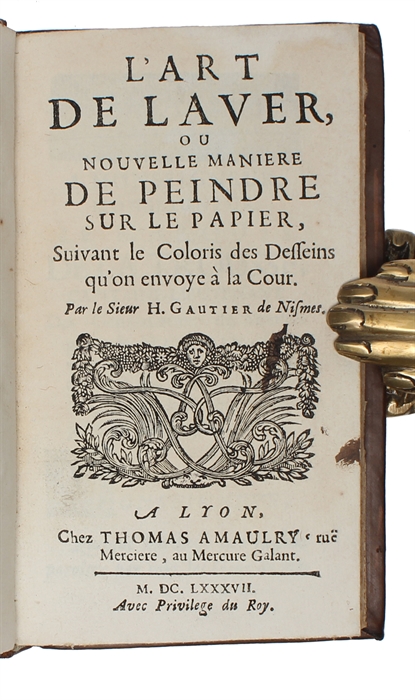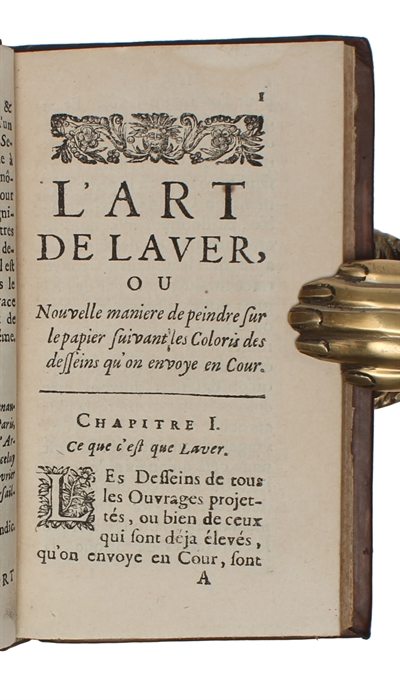EARLY WORK ON WATERCOLOURING
GAUTIER H
L'Art de laver, ou Nouvelle manière de peindre sur le papier, suivant le Coloris des Desseins qu'on envoye à la Cour.
Lyon, Thomas Amaulry, 1687.
12mo. In contemporary full calf with five raised bands and richly gilt spine. Small paper label pasted on to upper part of spine indicating the inventory number in an estate library. Worm-tract affecting upper margin of Pp. 65-154, slightly affecting text on Pp. 73-110, otherwise a fine copy. (22), 154 pp. + 1 plate.
First edition of one of the earliest European work on the technique of using watercolours. Especially in regard to military maps Gautier's technique had a profound influence. His detailed colour-coding made it possible for the cartographer to make a relatively realistic and beautified perception of space and a geometric and strategic one on the same map, one of the reasons why it was soon adopted as a European wide convention. "Henri Gautier (1660-1733) is also known as Gauthier de Nîmes, or Hubert Gauthier, and was the author of fortification and surveyance drawing manuals and treaties. Gautier was the first inspector of the Ponts et Chaussées – the Roads, Canals and Bridges Public Office of the Ancien Regime that promoted France-wide standards and monumental infrastructure works, in its desire for authoritarian control of the French territory. In this technical manual, Gautier applied the code in detail to the many features encountered of washing plans and maps – cultivated agricultural fields or trenches, vineyards or roads, portcullis or parapets. What made this code so precise, however, was not fact that Gautier’s alphabetically ordered abridged guide at the end of his handbook ran for some twenty pages, but that, with a craftsman’s care, he had specified both the intensity of the hue, and the precise pigment used (Gautier 135-54)."
Order-nr.: 60621



